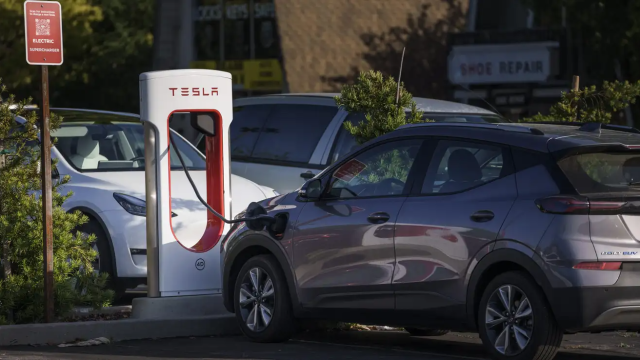Although EV sales in the U.S. have slowed, they still count for around 6.5 per cent of the automotive retail market in the U.S. This year, experts predict EVs will hit the million mark in number of new vehicles sold. You may be wondering where all the juice for these EVs will come from, but it turns out that when it comes to the electrical grid, there are bigger fish to fry.
Axios has a break down on why updating the electric grid will be worth the mind-blowing amount of money. EVs are not the main concern of experts in the utilities field — its climate change and the age of the current system that should give Americans pause. In the near term, the U.S. produces plenty of electricity to keep EV Americans moving, according to the Union for Concerned Scientists:
The grid is well-equipped to supply energy to EVs at current adoption levels. Over 2.7 million plug-in hybrid and full battery-electric cars and light trucks were sold in the United States by the end of 2021, with the majority of those still on the road. Sales of cars and light trucks in 2022 so far have been strong, with battery electric sales hitting a striking new record, and bus and heavy truck sales are expected to pick up as well. Even in states with higher EV adoption currently, power demand from EVs is not causing issues. For example, California has reach 16.3% light-duty EV sales (totaling 1.14 million EVs on the road), and while California has been struggling to maintain grid reliability the past few years, increased electricity demand from EV charging load is not one of the problems.
But will the grid survive the near future with the aim of 50 per cent of car sales being EV by 2030? Not without serious investment, which we will need with or without EVs.
America’s power grid currently gets a C- from the According to the American Society of Civil Engineers. The Department of Energy estimates power outages cost the U.S. economy $US150 billion every year — and that’s with only 0.2 per cent of power going to EVs, according to a study by the Argonne National Laboratory. It could take trillions to get the grid up to snuff, according to Public Utilities Fortnightly. The Wall Street Journal agrees there is enough power in the system, it’s just getting it where it needs to go that is the very expensive issue:
Many experts think the utility industry will be ready to generate enough power for the coming EV wave, thanks to planned capacity increases costing hundreds of billions of dollars.
But that isn’t the whole story. The potential for much more serious bottlenecks looms in the local legs of the grid that transmit electricity to individual homes and businesses. Expensive upgrades could be needed for these neighbourhood power-distribution systems. Additional spending will be needed to bolster the wires and transformers serving commercial sites as electric trucks and delivery vans become common.
Combined, all these investments likely would result in higher electric rates, many industry analysts say.
“The more they invest in the grid, the more those costs go back to consumers,” says Brad Stansberry, U.S. energy advisory leader at audit and consulting firm KPMG.
Even before the serious rise of EVs, power grids across the country have struggled. Texas, for example, has a little more than 80,000 EVs currently registered, according to the Department of Energy, but it was a climate change-driven storm that knocked out that state’s juice in February 2021. California, which has the highest rate of EV adoption in the nation, has experienced rolling blackouts since the early 2000s. California does occasionally ask EV owners to charge their vehicles during non-peak hours, but that is because so much energy is needed during the day for energy intensive activities like air-conditioning during heat waves, Scientific American reports.
In fact, electric cars could prove a boon for the electric grid thanks to bidirectional charging. A car juiced up overnight when demand is low could plug into the grid and provide extra power during peak use hours. It’s such a boon for utilities that California is considering making bidirectional charging mandatory on EVs. In hilly areas, EV trucks could actually generate power using gravity. And that’s not even counting the benefit of making a serious dent in emissions to combat our quickly warming world.
